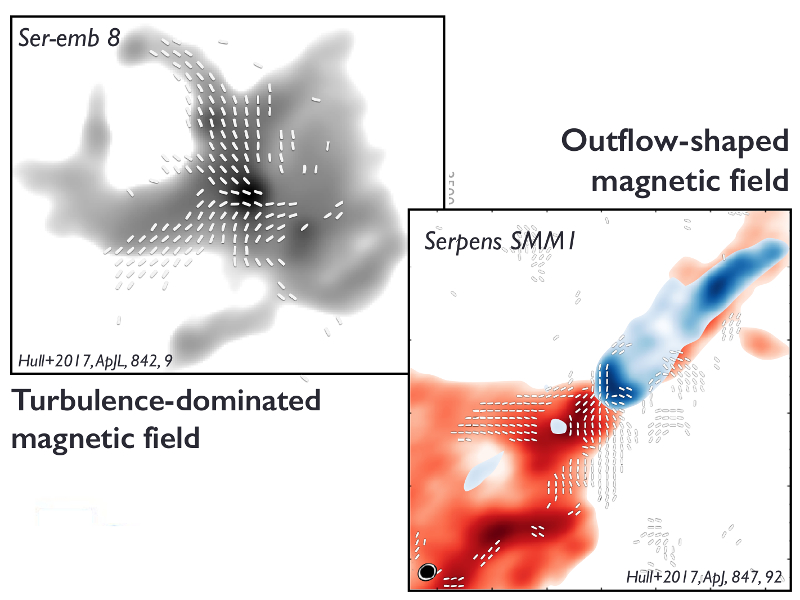| EPoS Contribution |
|
Using ALMA to Probe the Role of the Magnetic Field in the Earliest Stages of Star Formation
Chat Hull NAOJ, Santiago, CL | |
| The results from the ALMA polarization system have begun both to expand and to confound our understanding of the role of the magnetic field in low-mass star formation. I will show new ALMA results that comprise the highest resolution and highest sensitivity polarization images made to date of two very young, Class 0 protostellar sources. These observations achieve ~140 au resolution, allowing us to probe polarization -- and thus magnetic field orientation -- in the innermost regions surrounding the protostars. First is a Class 0 protostellar source in Serpens known as Ser-emb 8, where a comparison with cutting-edge, moving-mesh AREPO simulations suggests that turbulent motions -- not a large-scale magnetic field preserved from the source's natal cloud -- are dictating the magnetic field morphology immediately surrounding the protostar. In contrast, in the second source -- known as Serpens SMM1 -- the magnetic field has clearly been shaped by the bipolar outflow emanating from the central source, a situation that is quite different from the turbulence-dominated morphology of Ser-emb 8. Which situation is the most common? The strongly magnetized case that theories assumed as an initial condition for decades, and which was seen in some early observations by the SMA and CARMA? The turbulence-dominated case of Ser-emb 8? The outflow-shaped case of SMM1? These first results from ALMA will guide our path forward to the era of ALMA polarization surveys, which will in turn finally allow us to define (possibly several) archetypes for the role of the magnetic field in the earliest stages of star formation. | |
 | |
| Caption: ALMA observations of the magnetic field orientation toward two very young, Class 0 protostellar cores. On the left is Ser-emb 8, which has a magnetic field morphology dominated by chaotic, turbulent motions. The white line segments are the magnetic field orientation, rotated by 90o from the polarized continuum dust emission observed by ALMA. Grayscale is the total intensity, 870 micron dust emission. On the right is Serpens SMM1, whose bipolar outflow is clearly shaping the magnetic field on the southeast side of the source. The blue and red are the blue- and redshifted lobes of the low-velocity bipolar outflow from the central source, mapped in CO(2-1). The physical extent of the images is 3500 au (Ser-emb 8) and 5000 au (Serpens SMM1). The left- and right-hand images are adapted from Hull et al. 2017, ApJL, 842, 9 and Hull et al. 2017, ApJ, 847, 92, respectively. | |
| Collaborators: P. Mocz, Princeton U, US B. Burkhart, CfA, US A. Goodman, CfA, US J.M. Girart, ICE, ES P. Cortes, NRAO, CL L. Hernquist, CfA, US V. Springel, HITS, DE Z.-Y. Li, UVa, US S.-P. Lai, NTHU, TW K. Tychoniec, Leiden U, NL R. Rao, ASIAA, US R. Pokhrel, CfA, US Q. Zhang, CfA, US M. Houde, UWO, CA M. Dunham, CfA, US L. Kristensen, NBI, DK R. Plambeck, UCB, US |
Key publication
Suggested Session: Magnetic fields |

